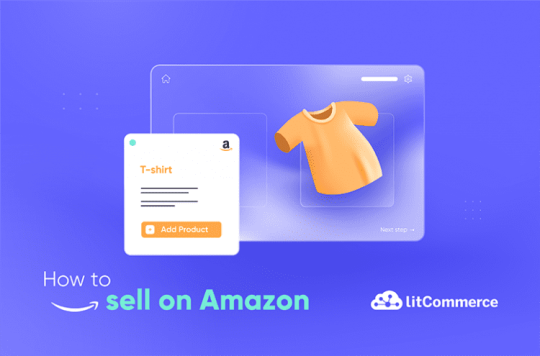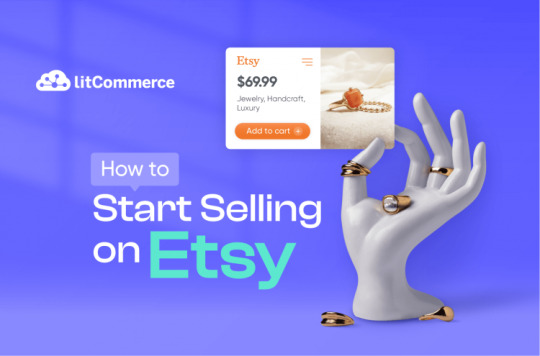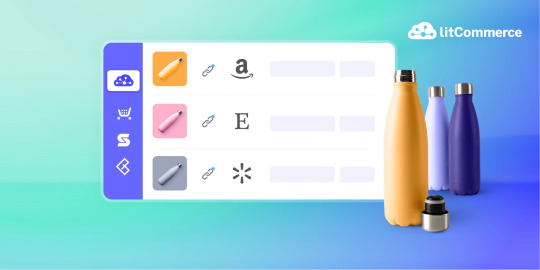I'm David Do LitC, Writer at LitCommerce. I have over 3 years of experience writing about marketing, SEO, and technology for E-Commerce businesses
Don't wanna be here? Send us removal request.
Text
Guide to Starting your Amazon Selling Business

Selling on Amazon can be a lucrative way to build an e-commerce business. Here are 10 essential steps to get started on the popular marketplace:
Set up your Amazon Seller Central account. You'll need to provide personal information to register.
Obtain an Employer Identification Number (EIN) from the IRS. This is required for tax reporting purposes.
Select your product category and research top-selling items. Refer to Amazon's bestseller lists for inspiration.
Create high-quality product listings with optimized titles, bullet points, images, and pricing. Follow Amazon's guidelines.
Consider Fulfillment by Amazon (FBA) for order fulfillment. This handles warehousing, shipping, customer service for a fee.
Set your inventory levels and pricing strategy. Determine how many units to keep in stock and whether to offer promotions.
Launch PPC advertising campaigns like Sponsored Products to boost visibility.
Maintain a strong seller rating with fast shipping and positive customer reviews.
Consider expanding to other sales channels like your own website or eBay for additional revenue streams.
Stay up to date on Amazon policies and programs through Seller University training resources.
Following these steps will help new sellers get their virtual store launched effectively on Amazon. Ongoing effort is required for long-term success.
Source: Litcommerce
0 notes
Text
Getting Started with Etsy Selling in 2024
Etsy is one of the largest online marketplaces focused on handmade or vintage items. With millions of active buyers, it can be a great place for entrepreneurs and creatives to sell their products. However, getting your Etsy shop set up and ready to welcome customers does require some preparation. Here are the key steps to take to begin your Etsy selling journey.

The first step is to create your Etsy seller account. You'll need to provide some basic contact and payment details. Be sure to use a strong password and enable two-factor authentication for security. Next, give your new shop a name that reflects your brand. Keep it short and memorable. You can also choose your shop currency, language, and location preferences.
Once your shop is created, it's time to start listing products. Be sure to upload high-quality, appealing photos that showcase your items well. Provide accurate descriptions covering materials, sizing, and any special features. Don't forget to price your items reasonably based on materials and manufacturing costs. You'll also need to set up shipping profiles and print labels through Etsy.
Promoting your new listings is important too. Hashtag relevant terms on social media posts and consider running some paid ads targeted at your niche. Ensure your shop policies and About pages provide buyers confidence. Respond quickly to any messages too. Over time, request reviews to build up a star rating and trust for your brand.
With consistent work uploading new stock, engaging customers, improving SEO, and more, your little Etsy shop can grow into a successful small creative business. Just be sure to always aim for high quality presentation and service every step of the way. Studying what competitors are doing can also help you to refine your strategy.
Source: Litcommerce
0 notes
Text
Top Tools for Listing Products on Multiple Channels

Selling your products across multiple online channels opens you up to a wider customer base. However, it can be time-consuming to manually list and update products on each platform. This is where multichannel listing software comes in handy. These tools make the process much more efficient by allowing you to list to multiple sales channels from a single dashboard.
Some top options to consider include Selz, TradeGecko, and Skubana. Selz is best for small businesses as its basic plan is free. It connects to major marketplaces like Amazon, eBay, and Etsy. TradeGecko is more full-featured and customizable. It offers inventory management, purchase orders, and sales analytics. Skubana provides multi-location and dropshipping capabilities. It supports global marketplaces and integrates with Shopify.
Other good alternatives are ChannelReply, Stitch Labs, and Multiorders. ChannelReply streamlines communications across sales channels. Stitch Labs automates inventory syncing to prevent out-of-stock issues. Multiorders specializes in Amazon and is best for companies with complex product catalogs.
The right multichannel listing tool depends on your business size and goals. Be sure to evaluate platforms based on supported marketplaces, features, pricing, and reviews from other users. Automating listings can save sellers significant time and boost sales nationwide.
Source: Litcommerce
0 notes
Text
Top 5 Ecommerce Strategies to Boost Your Online Sales
Whether you have an established online store or just starting out, implementing the right ecommerce strategies is key to growing your business. Here are some effective tactics to consider:
Start with product research to identify customer needs. Conduct market research and analyze competitors to see what products are selling well. Developing products that satisfy demand can help boost sales.
Pricing is also important. Know your costs and analyze what competitors are charging. Price competitively but also consider adding perceived value. You can use discounts and promotions temporarily to attract customers.
Managing inventory properly prevents losing sales from stockouts. Use tools to accurately track stock levels and replenish inventory in a timely manner based on sales patterns.
Engage customers through email marketing and loyalty programs. Send newsletters about new products and discounts. Reward repeat customers with points for future savings to encourage loyalty.
Leverage social media platforms where your target audience spends time. Create engaging content and use ads to promote your products on Facebook, Instagram, Twitter, etc. Measure performance to refine your strategy. Implementing these tactics can help boost online visibility and sales for your ecommerce business. Source: Litcommerce
0 notes
Text
Top Ecommerce Platforms for Online Sellers in 2024
Whether you're looking to start an online business or take an existing one multichannel, choosing the right ecommerce platforms is key to success. With thousands of options available, it can be difficult to narrow it down. In this post, we analyze the top 30 platforms based on features, audience, and suitability for different types of products.

Marketplaces or Platforms - An Overview Ecommerce platforms generally fall under two categories - marketplaces and software platforms. Marketplaces like Amazon and eBay allow others to sell on their site, acting as a middleman between buyers and sellers. Platforms like Shopify and BigCommerce give you more control as you build and manage your own online store.
Best Selling Platforms in 2024
Amazon - The largest marketplace globally with over 300 million users. Best for mass-produced consumer goods.
eBay - Known for niche/unique items and auction format. Great for pre-owned or rare finds.
Etsy - Perfect for handmade, vintage and craft items. Very social and trend-driven.
Mercari - Focuses on pre-owned goods like fashion and electronics. Easy listing process.
Poshmark - Specialized fashion resale marketplace. Social features help items get discovered.
Shopify - Most flexible overall with tons of features and partnerships. Strong for dropshipping.
BigCommerce - Competitive with Shopify and good for larger stores. Robust marketing tools.
WooCommerce - Popular open source option, best for self-hosting and custom projects.
Volusion - Best for customers only selling online. Robust yet easy to use.
Squarespace - Best for crafters and small brands. Beautiful templates no coding required.
Before deciding, analyze platform fees, features, your target audience and integrations with other important sales channels. A multichannel approach leveraging different marketplaces and your own website often leads to the most success. Choose platforms aligned with your products and goals.
1 note
·
View note